1. Hippos Are More Dangerous Than You’d Think
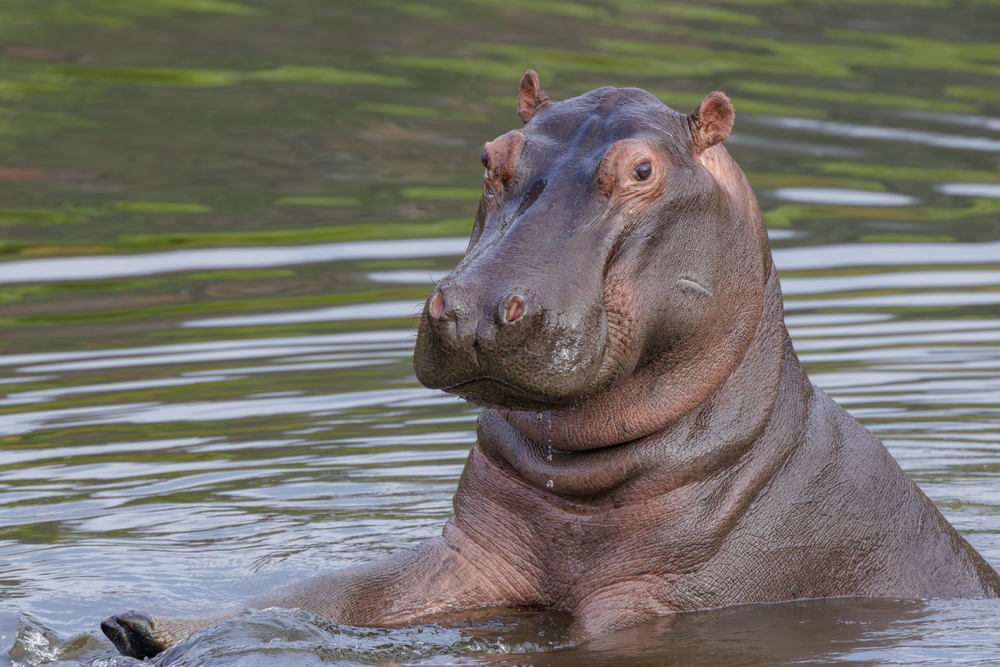
Sure, they look like giant marshmallows, but hippos are Africa’s most dangerous large animal. They kill more people each year than lions and crocodiles combined. With jaws that open nearly 180 degrees and tusks up to 20 inches long, they’re built for battle, not grazing. On land, they can charge at 19 mph—faster than you can sprint. In the water, they’ll sink boats just for trespassing. Cute? Not exactly. Terrifying? Absolutely.
2. Masters of Water—But They Can’t Swim

Hippos spend most of their lives in rivers and lakes, but here’s the twist: they can’t swim. Instead, they walk or bound along the riverbed, pushing off with powerful legs. They can hold their breath for about five minutes, snooze while floating, and even nap standing in the shallows. Water keeps their skin from frying in the sun, so they never stray too far. Their Greek name, “hippopotamus,” literally means “river horse”—though “river tank” might be more accurate.
3. Their Closest Cousins Are Whales
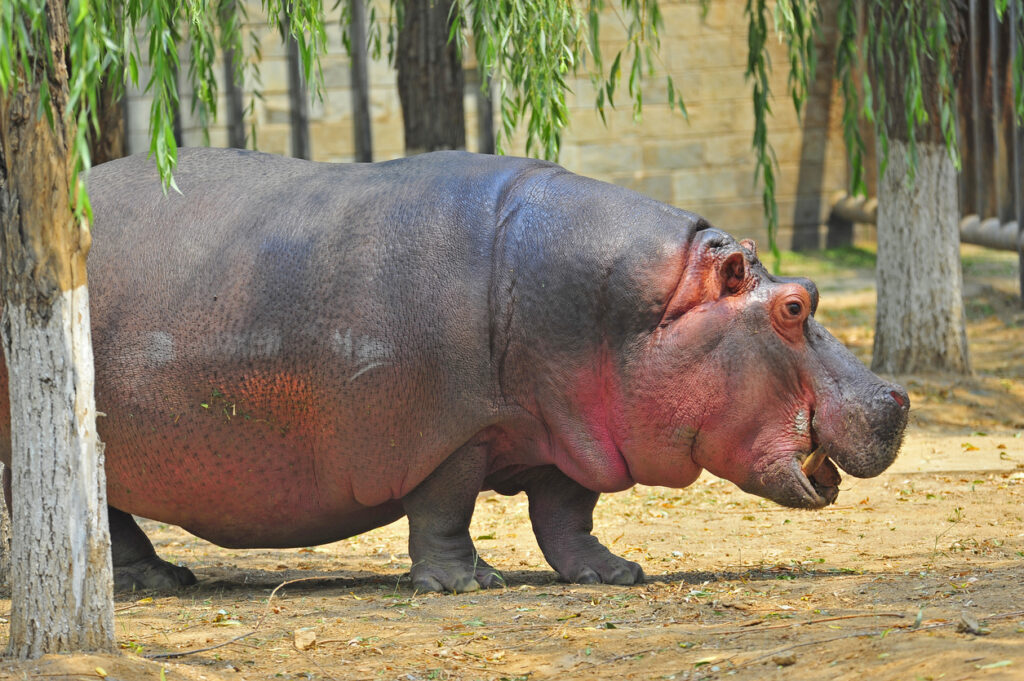
Hippos may look like giant pigs, but their closest living relatives are whales and dolphins. Both groups share a semi-aquatic ancestor that lived 55 million years ago. That’s why hippos have dense bones for sinking, lungs that handle long dives, and even “talk” underwater using low-frequency sounds—just like whales. Next time you see one lounging in a river, think of it as a whale that decided to stick with land.
4. Built-In Sunscreen Called “Blood Sweat”
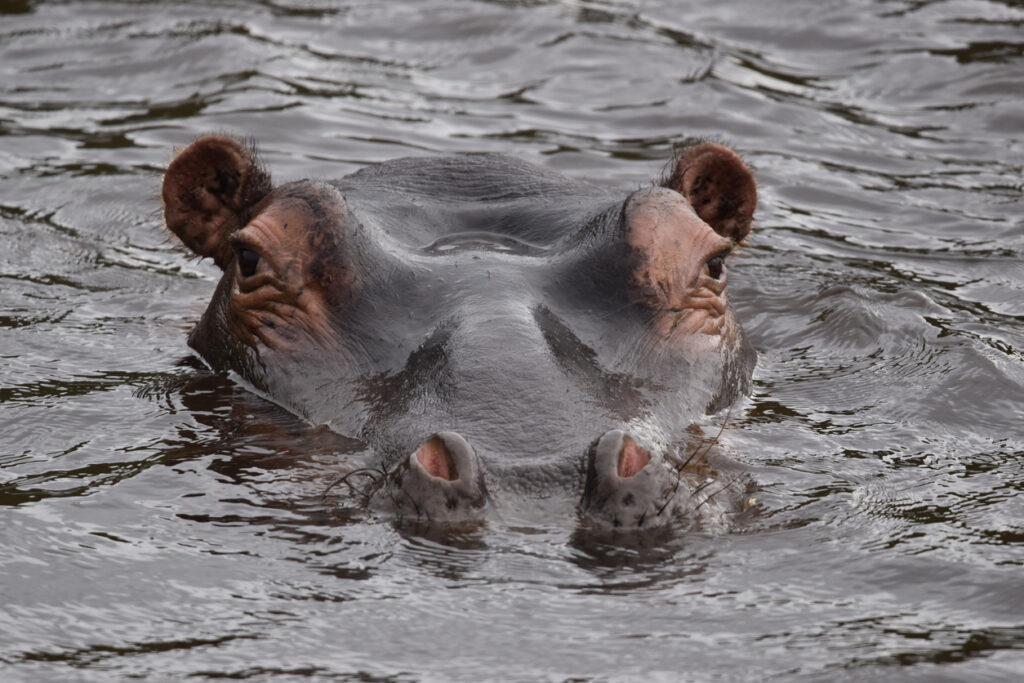
Hippos don’t need SPF 50—they ooze their own. Their skin secretes a reddish liquid nicknamed “blood sweat,” which acts as a natural sunscreen and antibiotic. It keeps them cool, wards off sunburn, and helps prevent infections. Scientists are even studying it for possible medical uses. It may look creepy, but it’s basically hippo super-skin lotion.
5. That Yawn Means “Back Off”

When a hippo stretches its mouth wide, it’s not being cute—it’s issuing a warning. Their yawns are intimidation displays, showing off those massive tusks sharp enough to crush bones. If another hippo (or unlucky human) ignores the message, fights can erupt. And these battles aren’t playful—they’re bloody, brutal, and sometimes fatal.
6. Baby Hippos Are Born Underwater
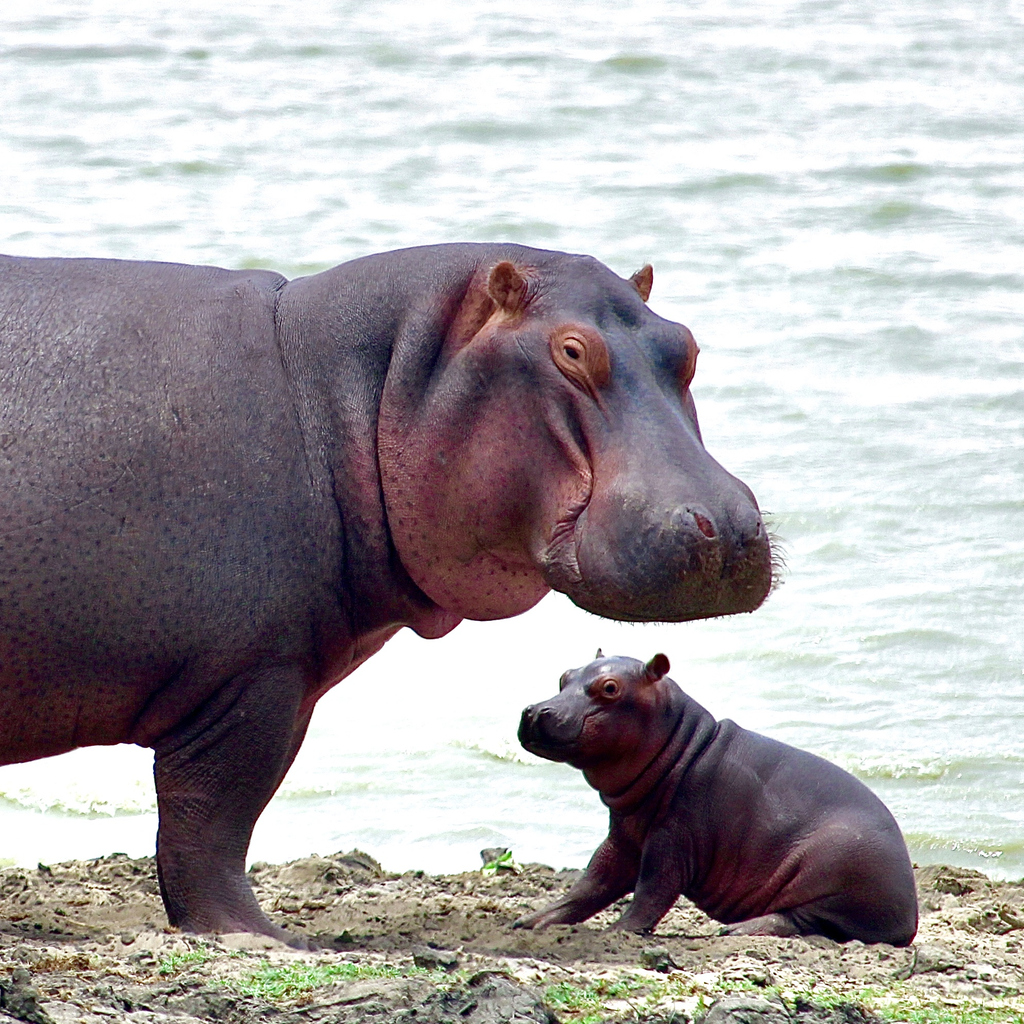
Talk about a dramatic entrance—hippo calves, weighing up to 100 pounds, are born underwater. They paddle to the surface for their first breath within seconds. Babies often ride on their moms’ backs or nurse underwater, perfectly adapted from day one. And don’t mess with a hippo mom—she’ll defend her calf with terrifying force.
7. They Sound Like a River Rock Concert

Hippos are noisy. Their signature “wheeze-honk” can echo across riverbanks, and they can bellow loud enough to shake the water. They even communicate underwater, using sound waves that ripple through rivers like whale songs. Pods use this chatter to bond, warn, and show dominance. Spend a night near a hippo river, and you’ll hear their chorus all evening.
8. Herbivores With a Dark Side

Normally, hippos graze peacefully on grass—up to 80 pounds a night. But on rare occasions, they’ve been seen eating meat or scavenging carcasses. Scientists aren’t sure why—maybe stress, lack of nutrients, or plain opportunity. It’s not common, but it’s unsettling. A reminder that wild animals don’t always stick to the script.
9. They’re Night Owls
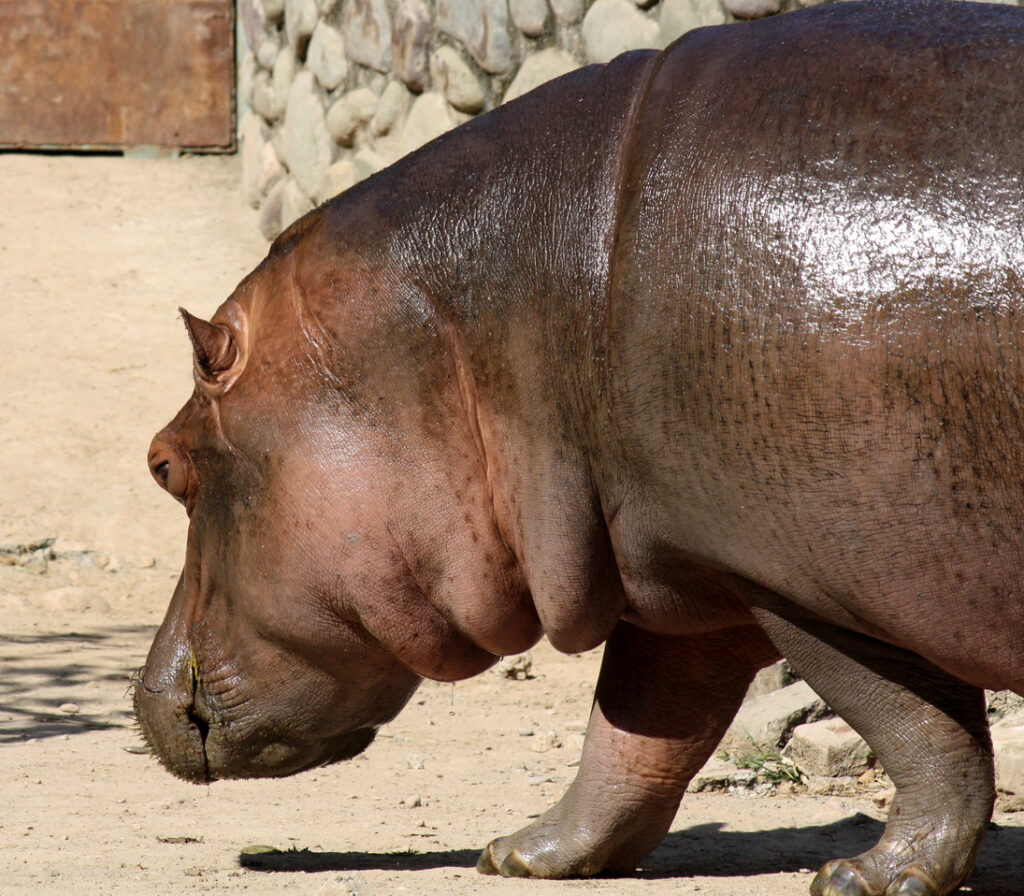
Hippos do most of their eating at night, wandering miles away from the river to graze under cover of darkness. By dawn, they return to water, where their sensitive skin stays protected from the blistering sun. That oozy “blood sweat” helps during these nightly foraging marathons, but mud baths are their real spa treatment—cooling, hydrating, and bug-proof.
10. Their Teeth Never Stop Growing
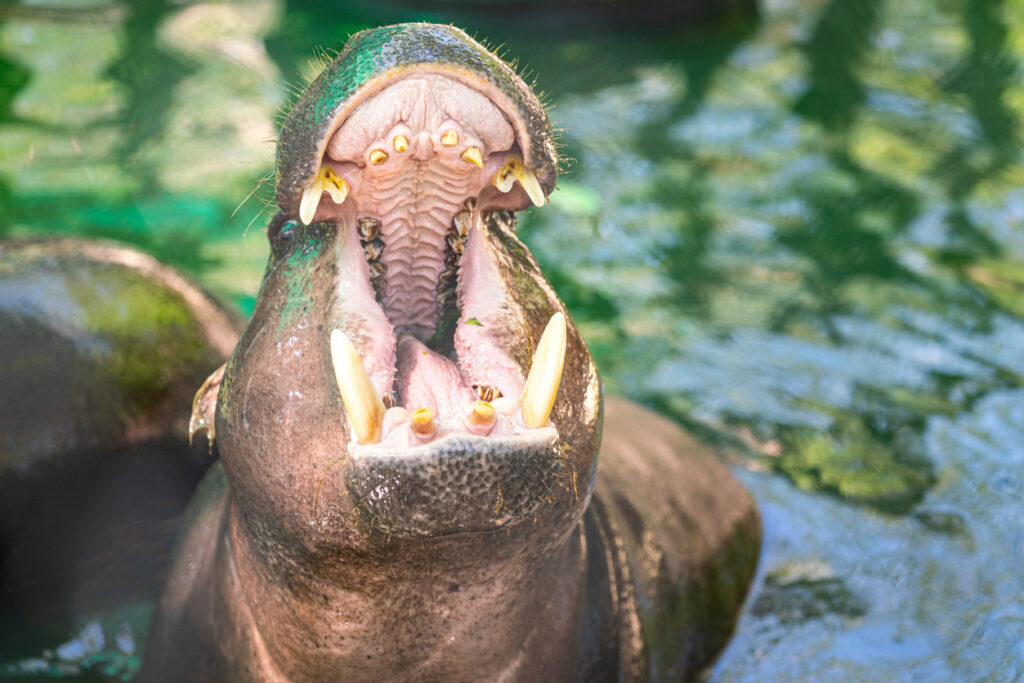
A hippo’s tusks (enlarged canines and incisors) grow continuously, some reaching 20 inches long. They don’t use them for chewing, but for fighting—like natural swords. Their back molars handle the grass-munching, while the tusks are pure weaponry. That’s why even an old hippo always has a mouth full of dangerous ivory.
11. Big, Fast, and Shockingly Agile
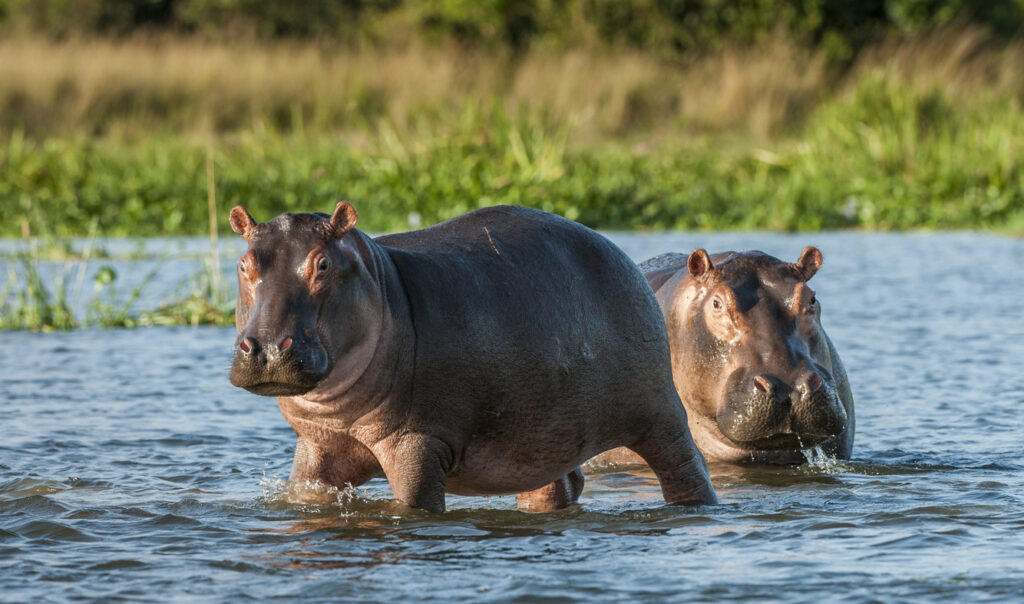
At first glance, hippos look like clumsy blobs. But in reality, they can run faster than humans—up to 19 mph. Their short, stocky legs are pure muscle, letting them charge on land and “gallop” underwater with surprising grace. Big doesn’t mean slow—it means unstoppable.
12. Hippos Live in Pods (a.k.a. Bloats)

Hippos are social creatures, living in groups called pods, herds, or—best of all—bloats. A typical pod has 10–30 members, led by a dominant bull who fiercely guards his turf. Females and calves form the heart of the group, while younger males linger on the edges. Life in a pod is noisy, competitive, and tightly bonded—like a hippo family drama.
13. Tough-Looking, But Delicate Skin

Despite their armor-like appearance, hippos have super-sensitive skin. Without water or mud, they dry out and crack quickly. That’s why they spend their days submerged, venturing out only when it’s cooler. Mud doubles as sunscreen and bug repellent, keeping them safe from sunburn and parasites. For such powerful animals, they’re surprisingly fragile when it comes to skincare.
Hippos are full of contradictions: they look goofy but are deadly, they can’t swim yet live in water, and they seem lazy but are lightning-fast when provoked. From their whale-like ancestry to their natural sunscreen and unpredictable tempers, hippos prove that appearances can be deceiving.
They’re not just “big animals”—they’re living reminders of nature’s power and mystery. Beautiful, bizarre, and brutally dangerous, hippos are proof that the wild still holds plenty of surprises.


